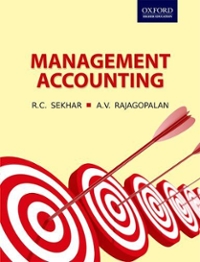Question
1.Our company sells a product for $150 per unit. Variable costs are $90 per unit and fixed costs are $18,000. The company expects to sell
1.Our company sells a product for $150 per unit. Variable costs are $90 per unit and fixed costs are $18,000. The company expects to sell 800 units this year. What is the contribution margin in total dollars?
a.60
b.$18,000
c.$30,000
d.$48,000
2.Our company sells a product for $120 per unit. Variable costs are $90 per unit and fixed costs are $9,000. The company expects to sell 500 units this year. What is the breakeven point in total sales dollars?
a.$45,000
b.$48,000
c.$54,000
d.$36,000
3.Our company sells a product for $120 per unit. Variable costs are $90 per unit and fixed costs are $4,000. The company expects to sell 200 units this year. What are the required sales in dollars needed to earn a profit of $5,000?
a.$24,000
b. $30,000
c. $36,000
d. $40,800
4.Our company has reviewed the utilities bills for our company. We have determined that the highest and lowest bills were $5,600 and $3,200 for the months of January and September. If we produced 1,200 and 600 units in these months, what was the variable cost per unit associated with the utilities bill?
A. $4.67
b. $5.33
c. $4.00
d. $5.00
5.Which of the following is true?
a. An increase in sales price per unit decreases the contribution margin per unit.
b. An increase in sales price per unit increases the number of units required to break even.
c. When the sales price per unit decreases, the breakeven point increases.
d. When the sales price per unit increases, the contribution margin per unit remains the same
Step by Step Solution
There are 3 Steps involved in it
Step: 1

Get Instant Access to Expert-Tailored Solutions
See step-by-step solutions with expert insights and AI powered tools for academic success
Step: 2

Step: 3

Ace Your Homework with AI
Get the answers you need in no time with our AI-driven, step-by-step assistance
Get Started


